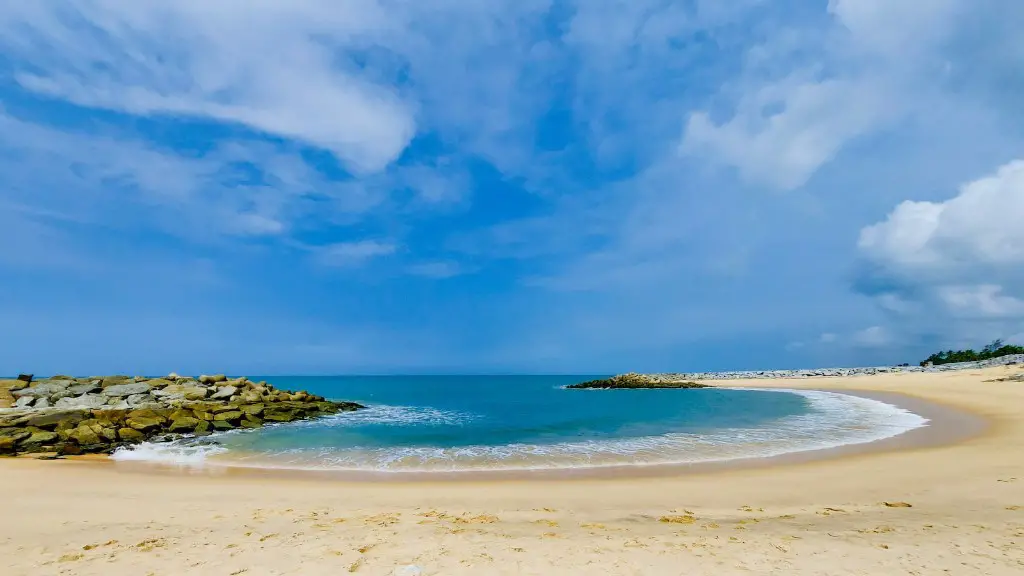Problematic History of South China Sea Dispute
The South China Sea has been an area of territorial dispute and an epicenter of military tension between China, Brunei, Malaysia, Indonesia, the Philippines, Taiwan, and Vietnam since the 1970s. It is a challenging issue as although the nine-dashed line of Beijing’s historic claim to the region stretches far beyond the 200 nautical mile Exclusive Economic Zones of the other countries, much of the area overlaps with their EEZs. Five of the coastal states have been actively laying claim to parts of the sea, whilst in July 2016 an international tribunal at The Hague effectively depriving China of historic rights over the region.
In recent years, China has been striving to assert greater control over the South China Sea by vigorously opposing any outside intervention in the region. David Brenner, professor of international legal studies at the University of Washington, says that “we may be looking at what could turn out to be a major naval conflict in the South China Sea.” Research from the US Center for Strategic and International Studies has identified that China is constructing military installations across the region to stabilize its power.
In the face of rising foreign presence, China is continuing to expand the Nine-Dashed Line. In addition to building artificial islands, it has also imposed a fishing ban in the region, passed a new Coast Guard Law and increased military manoeuvres in both the sea and the air.
Analysts, however, are skeptical as to how much of the South China Sea China can come to control. Barry Pavel, director of the Brent Scowcroft Center on International Security, believes that China “ exaggerates and extrapolates historic claims in the South China Sea…even if they have the technical and legal rights to the sea, the practical diplomatic reality is absent”.
Some experts have gone so far as to suggest that China’s claims are simply a ploy to distract its population from internal issues such as corruption and pollution. Rebecca Lissner, an international relations professor at Johns Hopkins University, believes that the South China Sea is “a useful political tool to rally popular sentiment during times of economic and political strife”.
China’s Ability to Take Control Over Region
China has taken a number of steps to try to strengthen its claim over the South China Sea, including controlling the trade routes in the region. The sea is also home to huge oil and gas reserves which are valuable resources for China, as well as its coastal neighbours.
In addition, China has encouraged coastal and maritime activities on a massive scale and has invested in a range of infrastructure projects to support its claim. The Shanghai International Organization for the Joint Development of the Marine Economic Cooperation (SIOJDC) is one example of China’s effort to dominate the maritime activities of the region.
China has also continually maintained its determination to resolve the South China Sea territorial dispute bilaterally with other countries and avoided unilateral decisions, such as military intervention. Chinese foreign ministry spokesman Geng Shuang declared that “China will not accept any of the unilateral decisions imposed on it by other countries”.
According to the Global Times, another Chinese newspaper, the Philippines’ continuous refusal to communicate on a bilateral basis has become an “obstacle hindering the resolution” of the South China Sea dispute.
The sprouts of shifts in attitude towards the South China Sea have been seen in recent months. In February, Vietnam agreed to cooperate with China economically in the region, and in April the Philippines signalled a softer stance towards the dispute. The potential for a more positive outlook could be an opportunity for the two countries to work together and create a mutually beneficial agreement.
Options for China Moving Forward
In terms of asserting Chinese sovereignty, the official position from Beijing is to find a diplomatic resolution to the South China Sea dispute. However, as noted by Parag Khanna from the Belfer Center, there is an increasing focus in China on how to use military strength to control the region with minimal international criticism.
One of China’s options is to establish a so-called “Air Defense Identification Zone” (ADIZ) in the South China Sea, similar to the one it established in the East China Sea in 2013. This would strengthen China’s claim to the area and give them greater control over the airspace and maritime activities.
The introduction of the ADIZ sparked much debate and had a large impact on the US-China relationship. Critics argued that the move had an adverse effect on regional stability and could lead to an escalation of tension in the region.
In addition to the ADIZ, much of China’s claims have been based on the notion of historic rights. There is however little evidence to back this up and modern international law requires a clearer proof of sovereignty in terms of economic activities or residence within the region.
Another option is to take advantage of the United Nation’s Convention on the Law of the Sea (UNCLOS). According to UNCLOS, a country can claim rights to its Exclusive Economic Zone out to 200 nautical miles, providing it with a legal right to resources and activities within that zone. This could be a way for China to accelerate its occupation of the South China Sea and legitimise its actions.
Other Nations’ Response to South China Sea Dispute
The international community has responded in different ways to the South China Sea dispute. Some nations have intensified their presence in the region, whilst others have surrounded themselves with international alliances and legal strategies. Australia, for instance, has deployed military vessels to ensure that the South China Sea remains neutral and stabilised.
The US, along with several other countries, has urged China to resolve the dispute peacefully, whilst taking a stance of neutrality on the matter. Despite its neutrality, the US has deployed its naval fleets to the South China Sea to keep a check on China’s activities in the region.
India, who is an increasingly influential player in the South China Sea, has taken a stance of non-interference. In 2018, India’s Minister of State for External Affairs M.J. Akbar declared India’s policy of “not taking sides but promoting deeper interaction with all the stakeholders.”
The involvement of the international community is testament to the strategic importance of the South China Sea and the implications of any potential conflict in the region. Any resolution of the dispute would require a delicate balancing act from all parties involved and the respect of international law.
China’s Political Influence in South China Sea
Political and military power is a key factor for China when it comes to asserting its claim to the South China Sea. China’s increased presence in the region has increased its diplomatic leverage, helping to ensure that negotiations are more likely to take place on China’s terms.
China’s military presence in the South China Sea has evolved from what was once a basic form of deterrence to a sophisticated strategic platform.
This military build-up has enabled China to control certain regions and dominate defence operations in the region. It is also thought to have given China the power to use economic power as a diplomatic tool when dealing with other coastal countries.
China has also used a number of tactics, such as isolating certain countries, in order to achieve its goals. One such tactic includes pressuring countries, including the Philippines and Vietnam, to accept China’s “historic rights” to the South China Sea.
Beijing has also used its economic and political power to convince countries such as Malaysia, Indonesia, and Thailand to provide support for its claim to the South China Sea. It has also used financial inducements and cooperative development opportunities to gain the support of other countries.
These tactics are all part of Beijing’s broader strategy to gain control over the South China Sea region. Beijing is likely to continue to use diplomatic and economic incentives in order to strengthen its position in the region.
Implications for South China Sea Region
The implications of China claiming a larger share of the South China Sea are far-reaching. It could result in a loss of access to resources, an increase in regional tensions, and disruption of international trade.
The loss of access to resources could especially damage the economies of small countries such as the Philippines, which depend heavily on fishing and mineral resources. It could also cause environmental damage as illegal fishing by Chinese vessels is already rampant in the area.
A further increase in regional tensions could have consequences for international security. China’s capabilities to project power in the South China Sea and its wider region could be a destabilizing element.
On the other hand, increased security by China could benefit other countries as it could lead to greater stability in the area. However, this could be at the expense of the freedom of navigation in the region.
The economic repercussions of China claiming the South China Sea could be felt globally. The disruption to international trade routes, such as the straits of Malacca, could prevent many countries from accessing vital resources and cause economic woes worldwide.
China’s Intentions Moving into the Future
It is likely that China will continue to develop its claims over the South China Sea. The stronger footing that it gains in the region is through legal claims, international diplomacy, and military activities.
China is putting a lot of effort into trying to convince its neighbours to accept its approach and it seems likely much of its success will depend on how well it can cooperate with them.
China’ latest military exercises, with weapons systems and control of the airspace, are designed to match with the US and its allies’ ability to project power in the region.
The South China Sea is a strategic area and the increasing military presence by other countries in the area indicates just how important the area is. The implications of any conflict in the region would be global in scale and it is in the interest of all countries to resolve the dispute amicably.
It is also imporant to remember that, whilst China’s military and economic power is increasing, this does not always translate into greater influence as regional tensions continue and they face a divided international community.
The Role of International Organizations
The United Nations, ASEAN and other international organizations have a vital role to play in resolving the South China Sea dispute. The UN, for instance, has been instrumental in facilitating dialogue between the different claimants in the region.
The UNCLOS is also a major international law governing the rights of countries in the South China Sea. This has allowed for the peaceful resolution of some of the disputes in the region through arbitration and facilitated peaceful talks between parties.
ASEAN has been a major proponent of upholding international law and established the ASEAN-China Declaration on the Conduct of Parties in the South China Sea, a milestone agreement in which the claimants agreed to abide by the rules of international law and, more specifically, the





